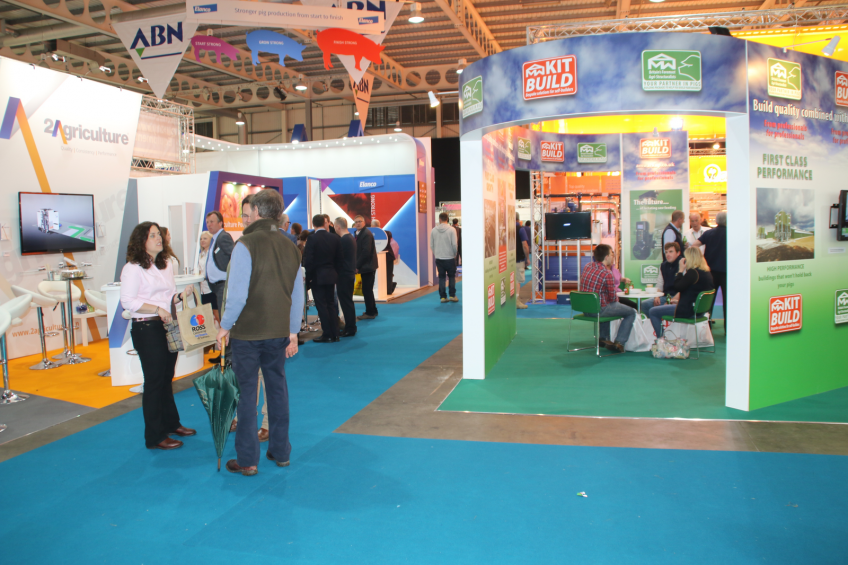Pig & Poultry Fair: UK pig industry struggles on

The biennial UK Pig & Poultry Fair took place as usual at the UK’s National Agricultural Centre, Stoneleigh Park, Warwickshire on May 10/11. Here is a rundown of the show.
The weather on the first day was somewhat miserable, something akin to the current state of the UK pig industry. Mick Sloyan, strategy director for the Agriculture and Hortitculture Development Board (AHDB) Pork, formerly known as the British Pig Executive (BPEX).
In his address at the start of the show, Sloyan reminded his audience that at the last salon in May 2014 the standard pig price (SPP) was £1.64/kg (€2.08), with feed wheat being £159/tonne (€201). The 2016 pig price is currently £1.13/kg (€1.44), although wheat stands at around £110/tonne (€139).
Pig producers losing €20 per pig
This means that producers are losing an average of about £16 (€20) per finished pig. Some producers have quit but it’s likely that the majority will stay in business. In comparison, this week’s pig price in the UK was £1.14/kg (€1.45), which is £0.02/kg (€0.03) higher than at its low point in mid-March. In addition, weaner and store pig prices have also gradually increased since March.
A ‘pulled pork’ campaign on UK television has been very successful, stimulating sales by 25% and improving consumer attitude to pork. Exports, to China in particular are increasing, with, for example, ears selling at £2.70/kg (€3.42).
Public debate on antibiotics use
Sloyan also commented on the public debate over the use of antibiotics. Speaking about the UK industry, he said, “We need to be able to demonstrate that we are using antibiotics responsibly and to help do this have introduced the Electronics Medicine Book (EMB). A record of annual antibiotics use is a requirement of the Red Tractor farm assurance scheme, however with EMB data will be available much more quickly, i.e. in real time rather than historically.
Given the gloomy price situation, producers seemed to be remarkably stoic. Pigs have always been boom or bust, but these days, producers are far more business-like and take a long-term view about their pig farming activities.
Electrostatic Particle Ionization
There were 350 exhibitors at the show, up on previous editions, many with new products. AM Warkup are UK agents for the Electrostatic Particle Ionization (EPI) Air System, an innovation by Baumgartner Environics in Minnesota, USA.

Nick MacIvor, AM Warkup, commented, “This sprays up to a thousand trillion charged ions into the air every second, which removes dust particles and gases from the air. Research would also indicate a reduction in pathogens as well.”
Also interesting: Murphy Brown going for cleaner air using ionisation
Automatic creep feed dispenser
Another innovation came from Denmark. Danish company Unitron, represented by UK company Houston Hog Innovations launched the UniFeeder concept. This feed dispenser automatically increases the amount of creep feed (dispensed up to 10 times/day), in line with the piglets’ growth. This way the creep feed is supplied to pigs in the way that is best for piglets: little and often, without requiring staff to do this manually.

JSR Genetics & Topigs Norsvin
Company amalgamations are getting more and more common. In May 2015, JSR Genetics and Topigs Norsvin announced that they were combining to form a genetic partnership for Great Britain, which also involves artificial insemination (AI).
JSR Genetics and Topigs Norsvin also combined their research and development programmes. At the 2016 show the new company launched the first line developed from the partnership: the JSR 9T F1 female, which will rear more pigs with a lower cost of production.











